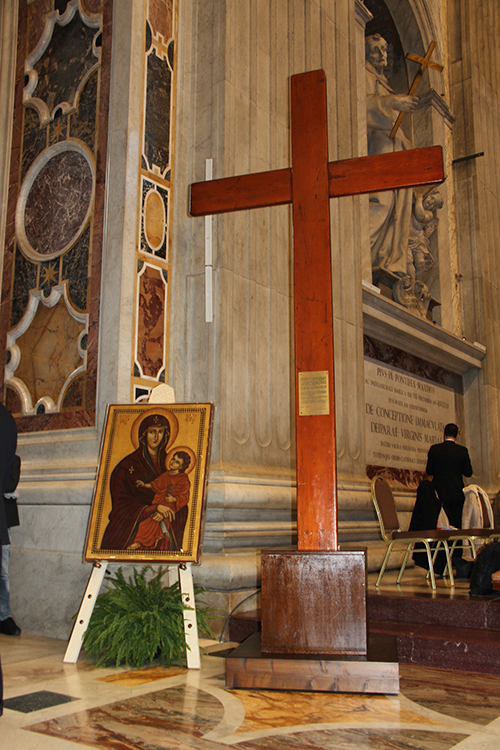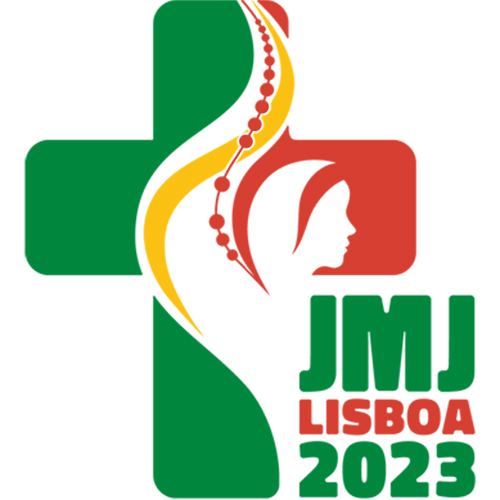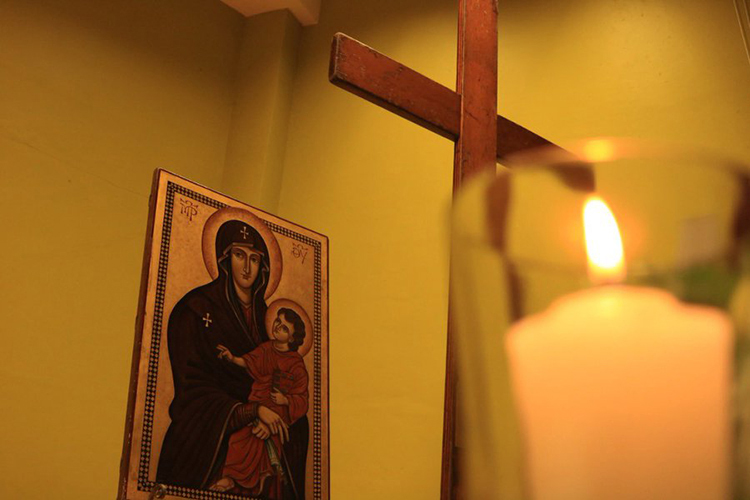The pilgrim cross and the icon of Our Lady "Salus Populi Romani" are scheduled to arrive in the Portuguese capital in a month's time. On January 27th they will be welcomed by the Local Organizing Committee (LOC) and the Portuguese dioceses at the Cathedral of Lisbon.
The arrival of the WYD symbols is a moment of special relevance in the calendar of the next World Youth Day, to be held in Lisbon in 2023.
Welcoming of symbols
Only the representatives of each diocese and the members of the Local Organizing Committee will be able to be present at the celebration of the reception of the Cross and the icon in the Lisbon Cathedral. These symbols were given to the Portuguese delegation on November 22, Christ the King Sunday, in a celebration presided over by Pope Francis at the Vatican.


After their arrival in Lisbon and official welcome, they will begin the traditional pilgrimage through the Portuguese and some Spanish dioceses and communities.
Since the election of Lisbon as the next venue for WYD, the Portuguese dioceses are promoting various activities of preparation, prayer and volunteering, in preparation for this world event.
XXVIII World Youth Day
This will be the 28th edition of the World Youth Days and, for the first time, it will take place in Portugal. An essentially Marian WYD, in the land of the apparitions of the Virgin Mary in Fatima, and whose chosen theme for this meeting is "Mary arose and departed without delay." (Lk 1:39), which presents Mary simultaneously as a woman of charity and as a missionary woman.


In fact, the logo of this WYD has the Cross as a central element. It is crossed by a path where the Holy Spirit appears and Mary is always present through the Rosary, a prayer that she expressly asked to be prayed in her apparitions to the little shepherds of Fatima. The colors (green, red and yellow) evoke the Portuguese flag.
The pilgrim cross
Standing 3.8 meters high, the pilgrim cross, built for the Holy Year in 1983, was entrusted by John Paul II to young people on Palm Sunday of the following year, to be carried around the world. Since then, the pilgrim cross, made of wood, began a pilgrimage that has already taken it to five continents and almost 90 countries. It has become a true sign of faith.
He has traveled through several nations on foot, by boat and even using unusual means such as sleds, cranes or tractors. He has gone through the jungle, visited churches, juvenile detention centers, prisons, schools, universities, hospitals, monuments and shopping malls. During his travels he has faced many obstacles: from air raids to transportation difficulties, such as the impossibility of traveling because he could not fit in any of the available airplanes.
He established himself as a sign of hope in particularly sensitive places. In 1985, he traveled to Prague, in what is now the Czech Republic, at a time when Europe was divided by the Iron Curtain, becoming a sign of communion with the Pope. Shortly after 9/11, he traveled to Ground Zero in New York, where the terrorist attacks that killed nearly 3,000 people took place. He also visited Rwanda in 2006, after the country suffered a devastating civil war.
The icon of Our Lady Salus Populi Romani
Since the year 2000, the pilgrim cross has been accompanied by the icon of Our Lady. Salus Populi Romaniwhich depicts the Virgin Mary with the Child in her arms. This icon was also introduced by Pope John Paul II as a symbol of Mary's presence among the young.
Measuring 1.20 meters high and 80 centimeters wide, the icon of Our Lady of the Salus Populi Romani is associated with one of the most popular Marian devotions in Italy.. There is an ancient tradition of carrying it in procession through the streets of Rome to ward off dangers and misfortunes or to ward off plagues.
The original icon is in the Basilica of Santa Maria Maggiore in Rome, where Pope Francis goes to pray and lay a bouquet of flowers before and after each apostolic journey.












